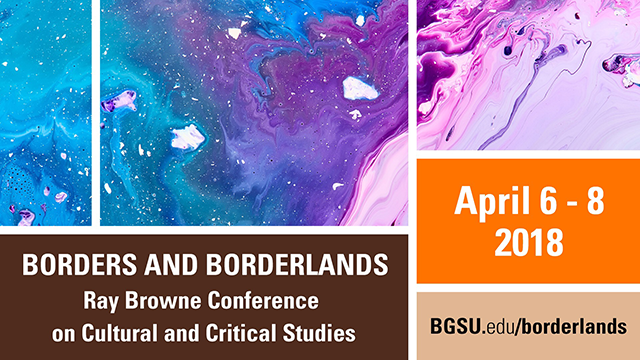
Concurrent Panel Session Two
Breaking, (re)Assembling Barriers: On the Border with Khaled Jarrar
Start Date
6-4-2018 10:30 AM
End Date
6-4-2018 11:20 AM
Abstract
In 2016, Palestinian artist-activist Khaled Jarrar created two projects from the physical fragments of the separation/barrier walls between the United States-Mexico and Israel-Palestine. In the first piece titled Upcycle the Wall, Jarrar chipped concrete fragments from the Israel-Palestine separation wall. Using the fragments, he created cement soccer balls, shoes, and rackets. In the second piece, Jarrar travelled to the United States – Mexico border and removed large metal beams from the separation wall. Titled Khaled’s Ladder, Jarrar used the fragments to construct a metal ladder and placed the structure in a playground in Juarez, Mexico. Transforming the original function of the barrier wall material, Jarrar repurposed the fragments to unify the local border communities and encourage participatory interaction. This type of disruption between object and location serves as a constant theme in Jarrar’s oeuvre.
Considering Jarrar’s work on projects like Upcycle the Wall and Khaled’s Ladder, this paper investigates how artists use borders/barriers/obstructions as objects of unification, rather than separation. Originating from Palestine, a region fraught with dislocation, separation, and exclusion, Jarrar seeks to expose the limitations created by physical barriers and borders. In the process of creating of each piece, Jarrar and his collaborators confront various hostilities that seek to separate and divide populations and communities. I contend that these types of works serve to transform, rather than divide, challenging viewers and participants to consider how borders can be manipulated and reconfigured. I also examine how works like Upcycle the Wall and Khaled’s Ladder are used as tools for engagement, rather than displacement. Discussed throughout the paper, Jarrar’s participatory projects encourage interaction and participation, targeting those divided by physical and psychological barriers.
Keywords
Palestine, Mexico, Barriers, Border, Activism, Khaled Jarrar, Socially Engaged Art, Participation
Breaking, (re)Assembling Barriers: On the Border with Khaled Jarrar
In 2016, Palestinian artist-activist Khaled Jarrar created two projects from the physical fragments of the separation/barrier walls between the United States-Mexico and Israel-Palestine. In the first piece titled Upcycle the Wall, Jarrar chipped concrete fragments from the Israel-Palestine separation wall. Using the fragments, he created cement soccer balls, shoes, and rackets. In the second piece, Jarrar travelled to the United States – Mexico border and removed large metal beams from the separation wall. Titled Khaled’s Ladder, Jarrar used the fragments to construct a metal ladder and placed the structure in a playground in Juarez, Mexico. Transforming the original function of the barrier wall material, Jarrar repurposed the fragments to unify the local border communities and encourage participatory interaction. This type of disruption between object and location serves as a constant theme in Jarrar’s oeuvre.
Considering Jarrar’s work on projects like Upcycle the Wall and Khaled’s Ladder, this paper investigates how artists use borders/barriers/obstructions as objects of unification, rather than separation. Originating from Palestine, a region fraught with dislocation, separation, and exclusion, Jarrar seeks to expose the limitations created by physical barriers and borders. In the process of creating of each piece, Jarrar and his collaborators confront various hostilities that seek to separate and divide populations and communities. I contend that these types of works serve to transform, rather than divide, challenging viewers and participants to consider how borders can be manipulated and reconfigured. I also examine how works like Upcycle the Wall and Khaled’s Ladder are used as tools for engagement, rather than displacement. Discussed throughout the paper, Jarrar’s participatory projects encourage interaction and participation, targeting those divided by physical and psychological barriers.

